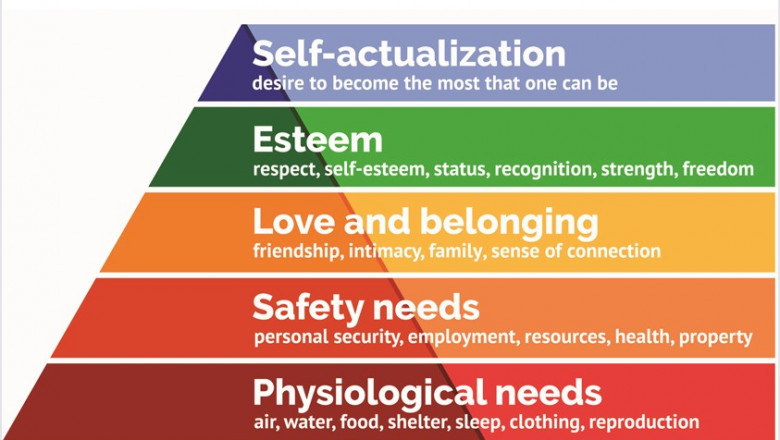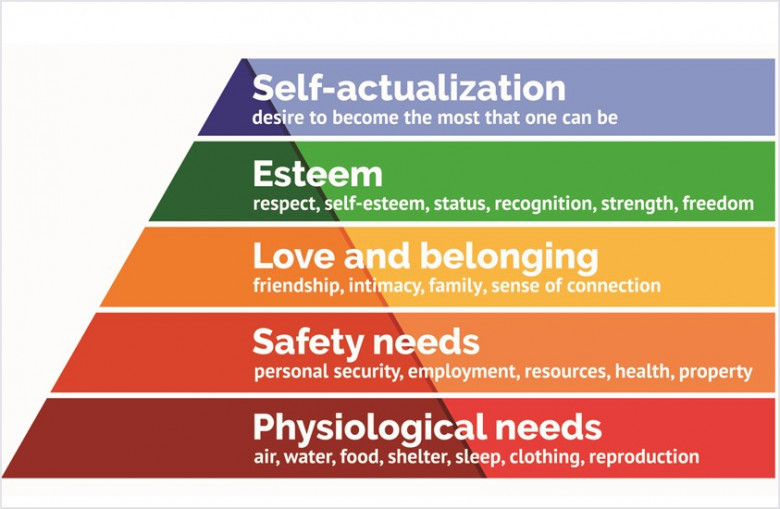views

For it is found to be true that anybody needs these three things to live and a lack of either one makes life incomplete. Now after you have worked and have achieved these three, what comes next?
If you wonder what comes next, answer lies in understanding the hierarchy of the needs. In comes Abraham Harold Mascow, an American Psychologist, who proposed, in the shape of a pyramid, the hierarchy of needs. His theory of hierarchy told us the motivation behind human behavior and how he goes about from one step to the one ahead, in life. Maslow’s hierarchy still being spoken about, even today, and used by everyone from psychologists to therapists, to counselors and advertising gurus, behavioral scientists, and security experts, is testimony to its universal application and appeal.
Abraham Maslow was born to Jewish immigrants to Russia and according to his own accord, had had a difficult and lonely childhood, spent mainly in company of books. He pioneered the Humanist Psychology movement that dealt with human motivation, self-actualization, peak performance and basic needs.
What is the Maslow’s hierarchy
It is simple but profound theory that human beings start out by first surviving in life. Food, water, sleep are some of the elements a man needs to stay alive. Those are basic survival instincts of every living being, from a single celled organism to a human.
Then once he is sure of his basic survival, he needs to be secure, which is part of the evolutionary instincts of being safe from dangers like wild animals, natural elements and other people.
Once he is safe from dangers, now his psychological needs start to show up- the need for love and belonging.
That met, he realizes he has accomplished quite some things along the way to being alive, being safe and feeling loved. Now he needs self-esteem, praiseand reward for his accomplishments.
It’s a long way till he comes this far and then he feels it’s time to do something for others, so that his name stays for posterity. That is his self-actualization need.
Does Maslow’s Hierarchy of needs still apply in the times that we live in?
It is surprising to see how human needs have evolved over time. While the hierarchy has remained intact, the time taken for humans to jump from one level to the other has drastically changed. The aspects that humans attach utmost importance to have also changed. Maslow’s needs reflect in a different way from one social stratum to the other. While the elite born no longer have to worry about basic needs and safety needs, what with being born into families that provide for everything that a child needs, many kids only begin to realize that they need praise even from a young age. Parents are more than willing to indulge in the kids and shower love, affection and praise on these kids, many of whom are lone kids in the family. On the other end of the spectrum are the kids from the underprivileged backgrounds, those who are abandoned, those who have to stay away from schools and beg, work or strive to earn their daily bread. Several nations base their development policies in meeting this need of kids of such strata. Governments the world over and several NGOs are functioning around providing basic needs like food, shelter and clothing to those who cannot manage themselves.
Not surprisingly, a whole list of industries and businesses have sprung up that utilize the insights from Maslow’s Hierarchy of needs. Advertisers appear to have gulped down abundant amounts of this theory in concentrated form, for their messages and target audiences are sharply based on the same. Read more....












